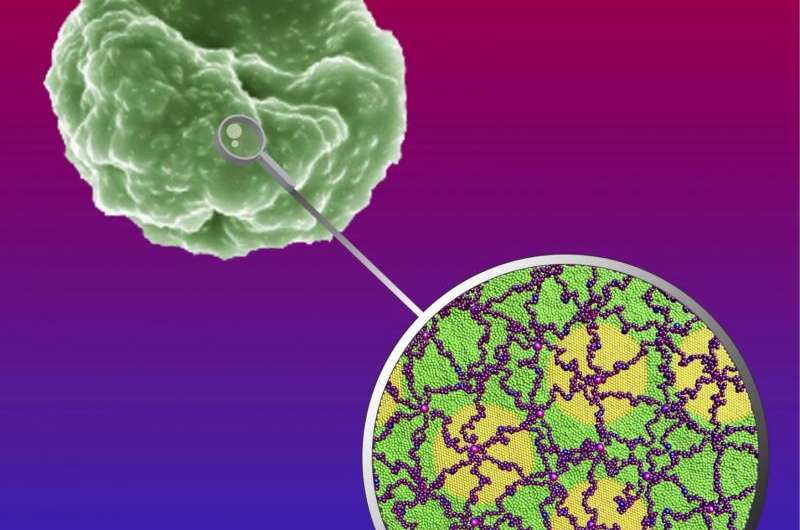Model uncovers malaria parasite causes red blood cell changes

A model of a malaria-infected red blood cell may lead to better ways to treat malaria, according to a team of engineers and molecular biologists who investigated how this parasite infection causes the red blood cells to stiffen.
Normal red blood cells are about 8 microns in size, but can circulate in the microvascular system with a diameter of 1 to 2 microns because they are flexible, deformable and durable. Cells infected with the Plasmodium falciparum parasite, the most virulent form of malaria parasite, become stiff and sticky and become lodged in small blood vessels while the parasite is developing and so avoid the filtering action of the spleen.
"The malaria community knew about the fact that red blood cells get stiff and sticky when they are infected, " said Sulin Zhang, associate professor of engineering science and mechanics, Penn State. "They were also fairly certain why it becomes so sticky, but they are not certain why it becomes so stiff. You can't really treat the disease if you don't understand the mechanism."
Leann Tilley, professor of biochemistry and molecular biology, University of Melbourne, suggested to Zhang that an engineering approach might help.
Red blood cells are one of the simplest human cells. A fatty, two-dimensional bilayer pairs with a protein-rich cytoskeleton to form the membrane. Normally, the red blood cell's surface is smooth and the cell is deformable, but when infected with a malaria parasite, small protein nodules called knobs form on the surface. The size and number of knobs change as the parasite matures.
To understand the stiffening process, the team developed a model of the red blood cell that enabled them to understand what the knobs did to stiffen the cell membrane.
"Models can be rough or detailed, " said Zhang. "If the model is too detailed, the computation becomes very expensive, if it is too coarse, we cannot capture the molecular detail. We created a model at the right scale with sufficient details but coarse enough for computation—molecularly faithful and computationally affordable."

The researchers published the results of their model in today's (Apr. 27) online issue of Proceedings of the National Academy of Sciences.
The model found that the knobs, being stiff, contribute to cell membrane stiffness. At the same time the presence of the knobs elevates the strain in the cytoskeleton and because the cytoskeleton itself is strain-hardening—the higher the strain, the higher the stiffness—this also stiffens the membrane. Also, as the number of knobs increase, the number of linkages between the lipid bilayer and the protein cytoskeleton also increases. This further stiffens the cell.
"A promising way to treat the disease is to soften the cells," said Zhang. "If we could find drug molecules that break the protein links between the knobs and the cytoskeleton, we could soften it."
Beside Tilley, Zhang, who works in theoretical and applied mechanics, worked with Ju Li, Massachusetts Institute of Technology, who is a materials physicist and Subra Suresh, president, Carnegie Mellon University, who specializes in materials science.
"It is not possible for one party to do this type of work," said Zhang. "Without molecular information, the model can not be faithful. The experimental techniques have difficulty identifying the key factors out of many possibilities. Modeling, given molecular structures, can point to the underlying mechanism"
More information: Multiple stiffening effects of nanoscale knobs on human red blood cells infected with Plasmodium falciparum malaria parasite, www.pnas.org/cgi/doi/10.1073/pnas.1505584112
Journal information: Proceedings of the National Academy of Sciences
Provided by Pennsylvania State University


















